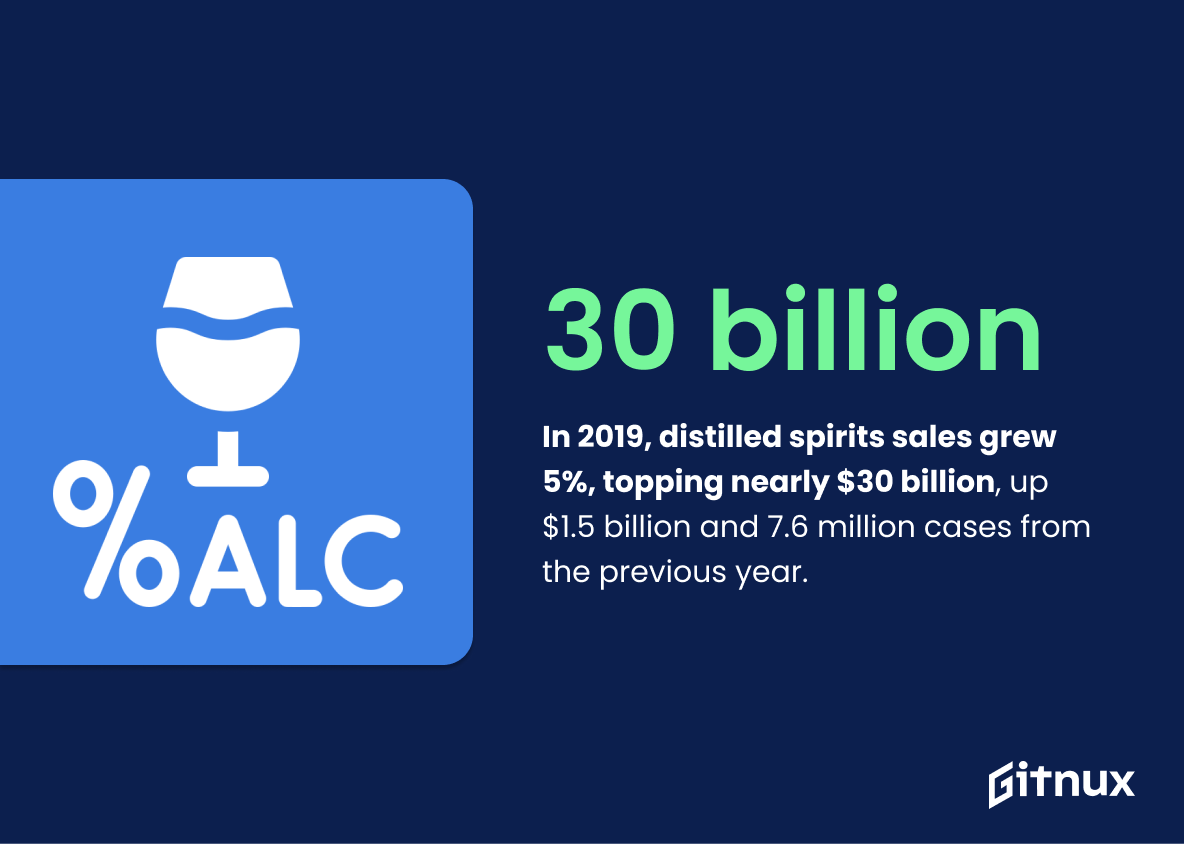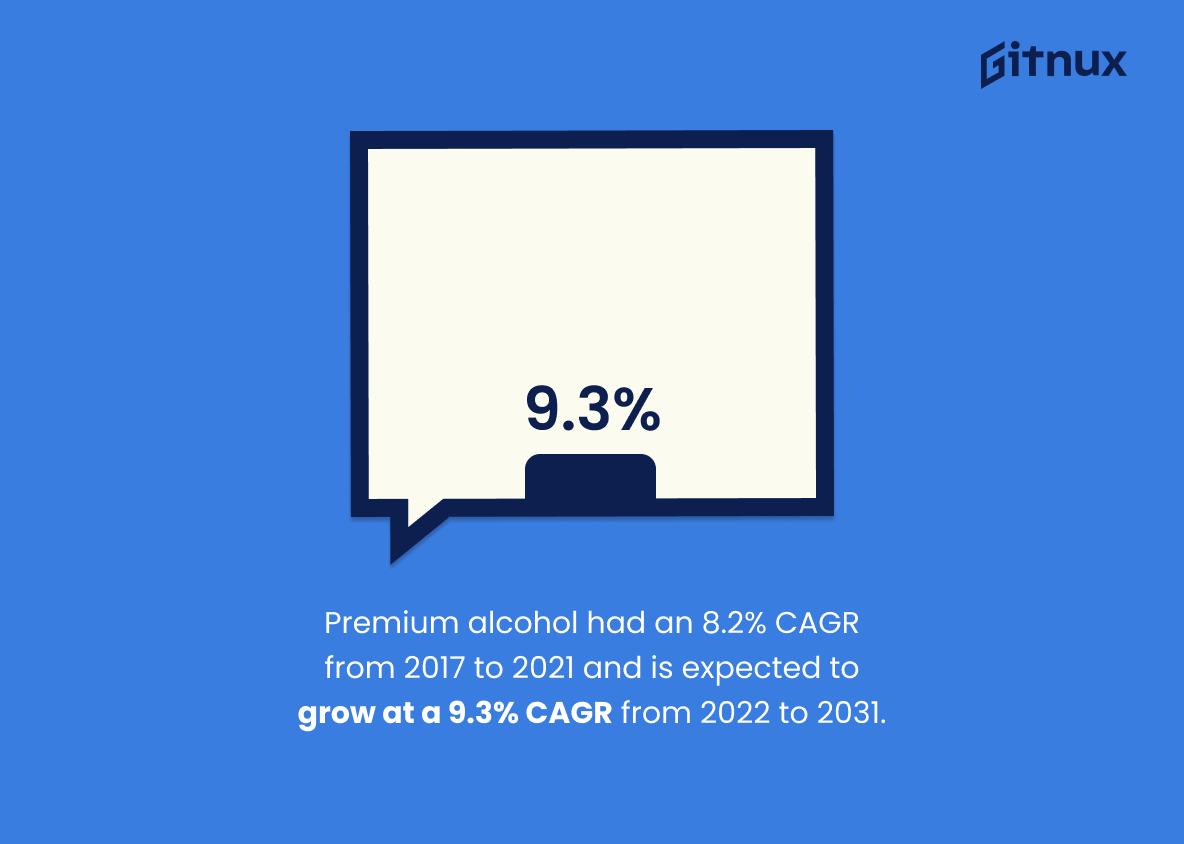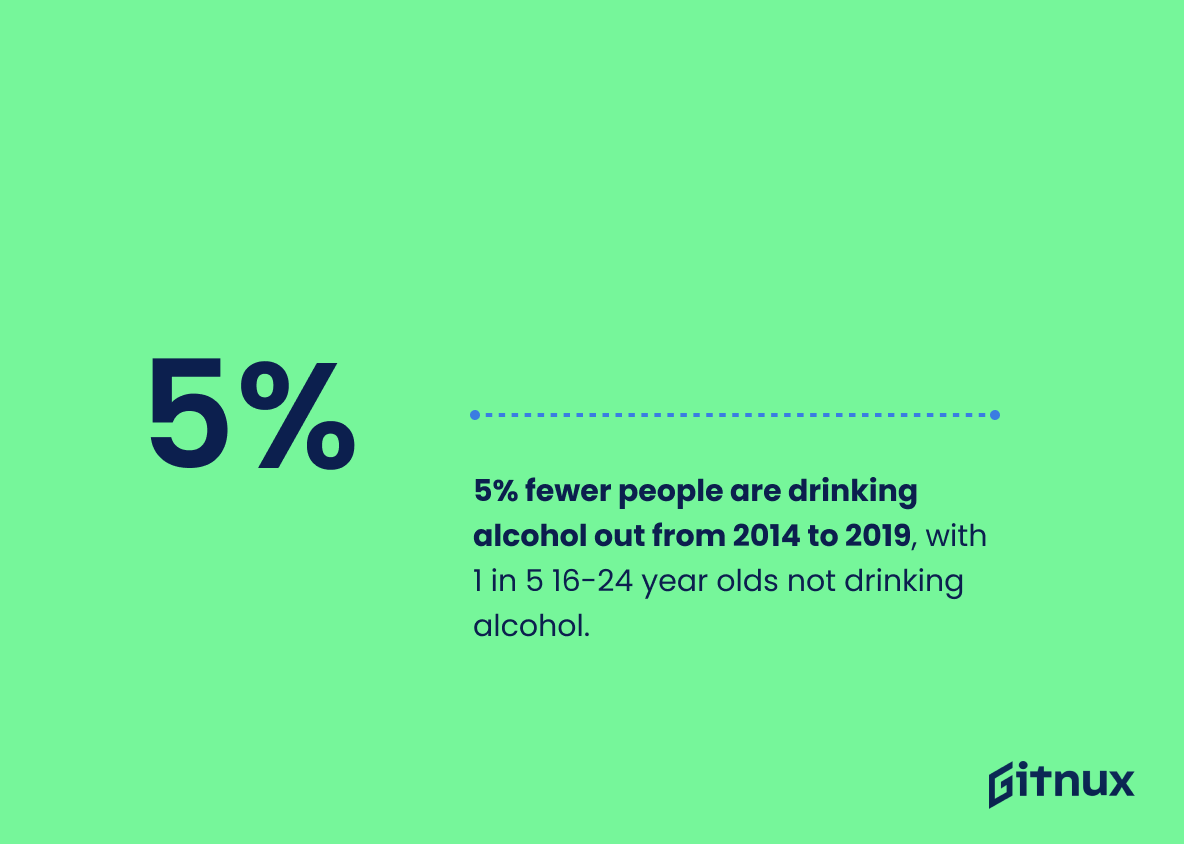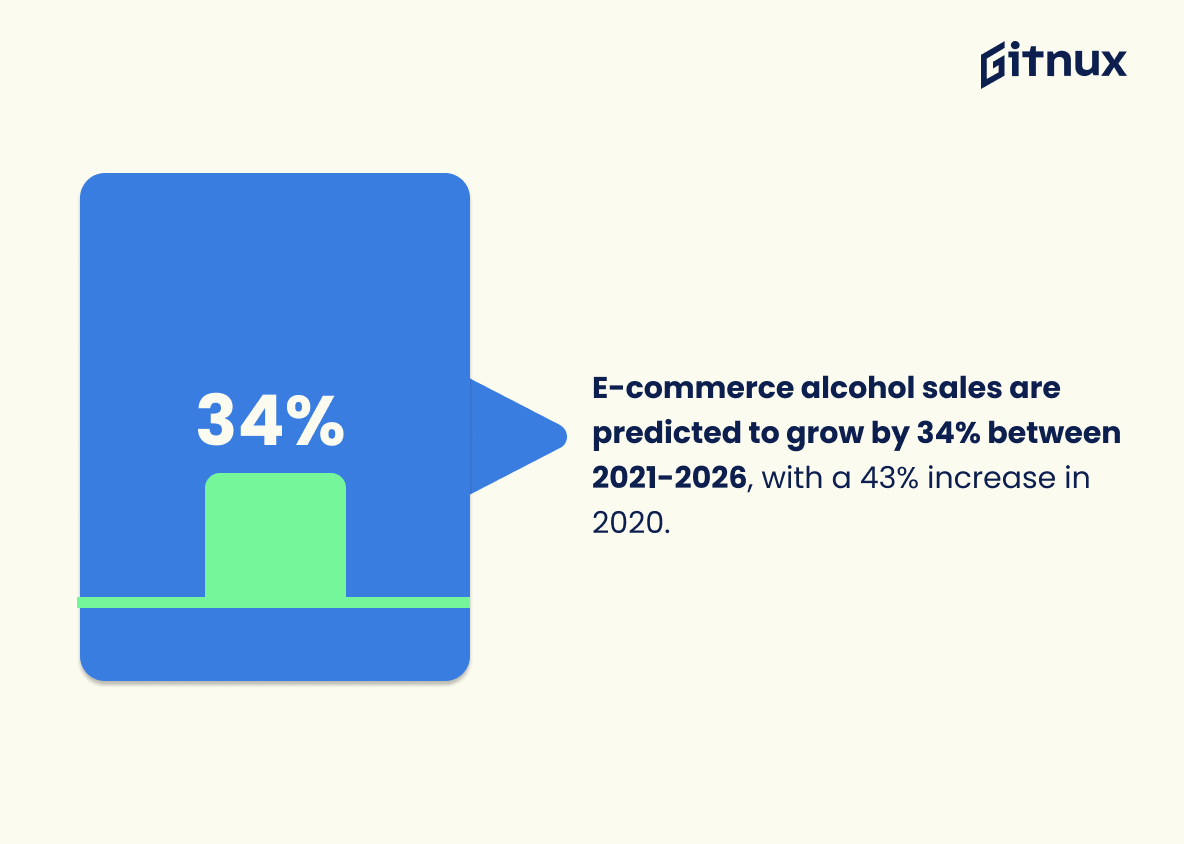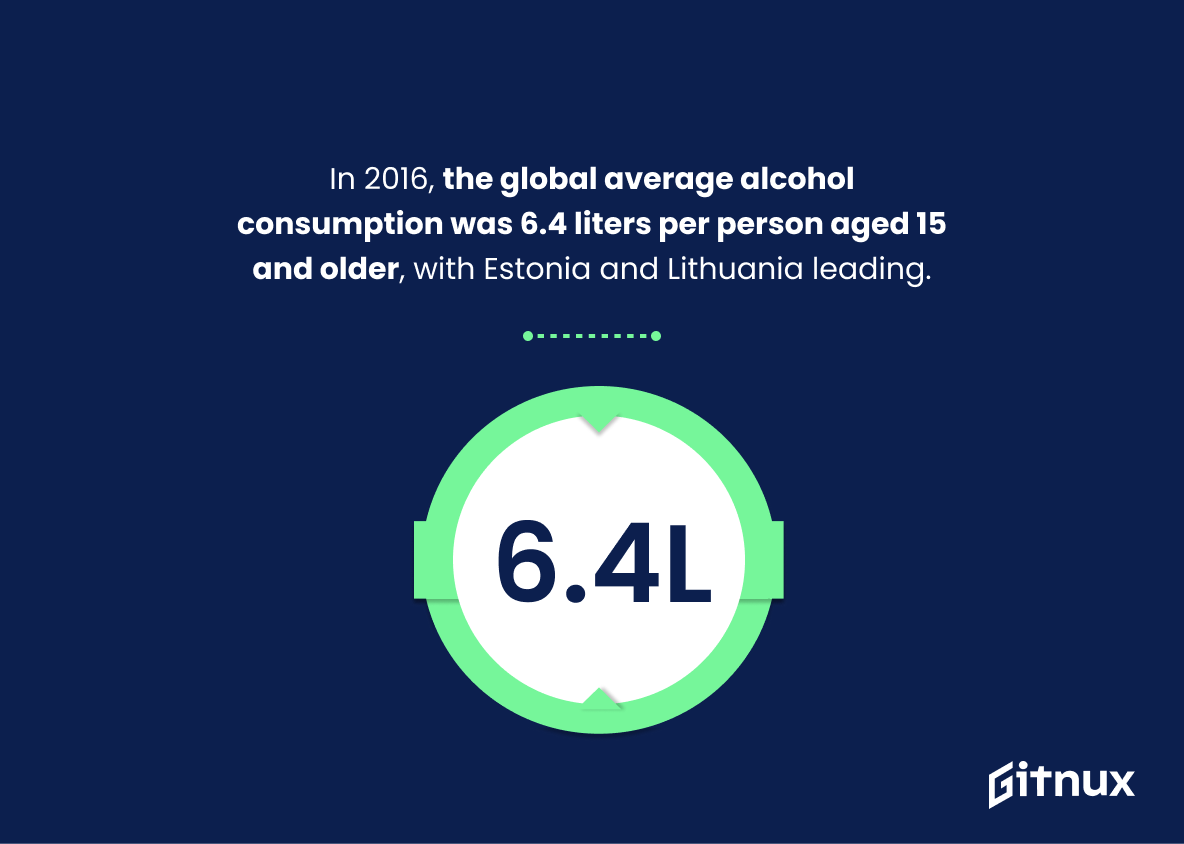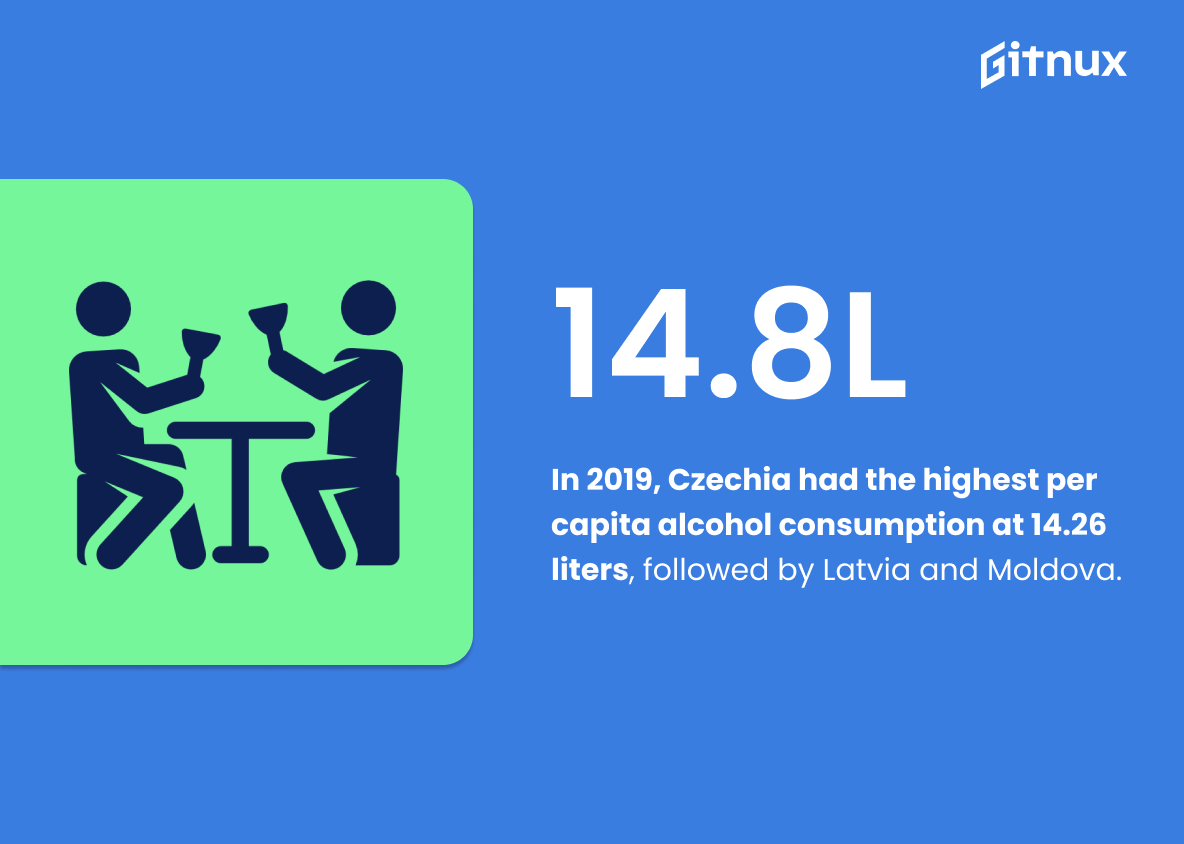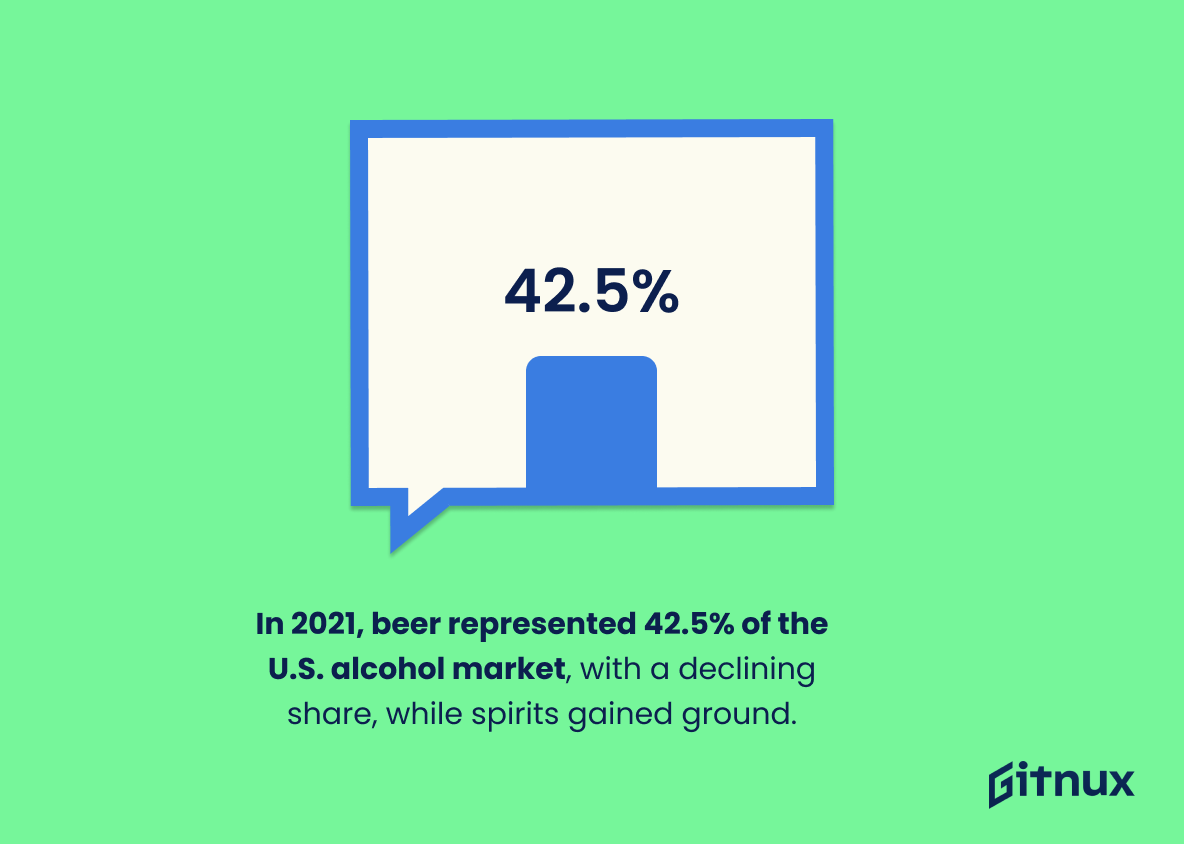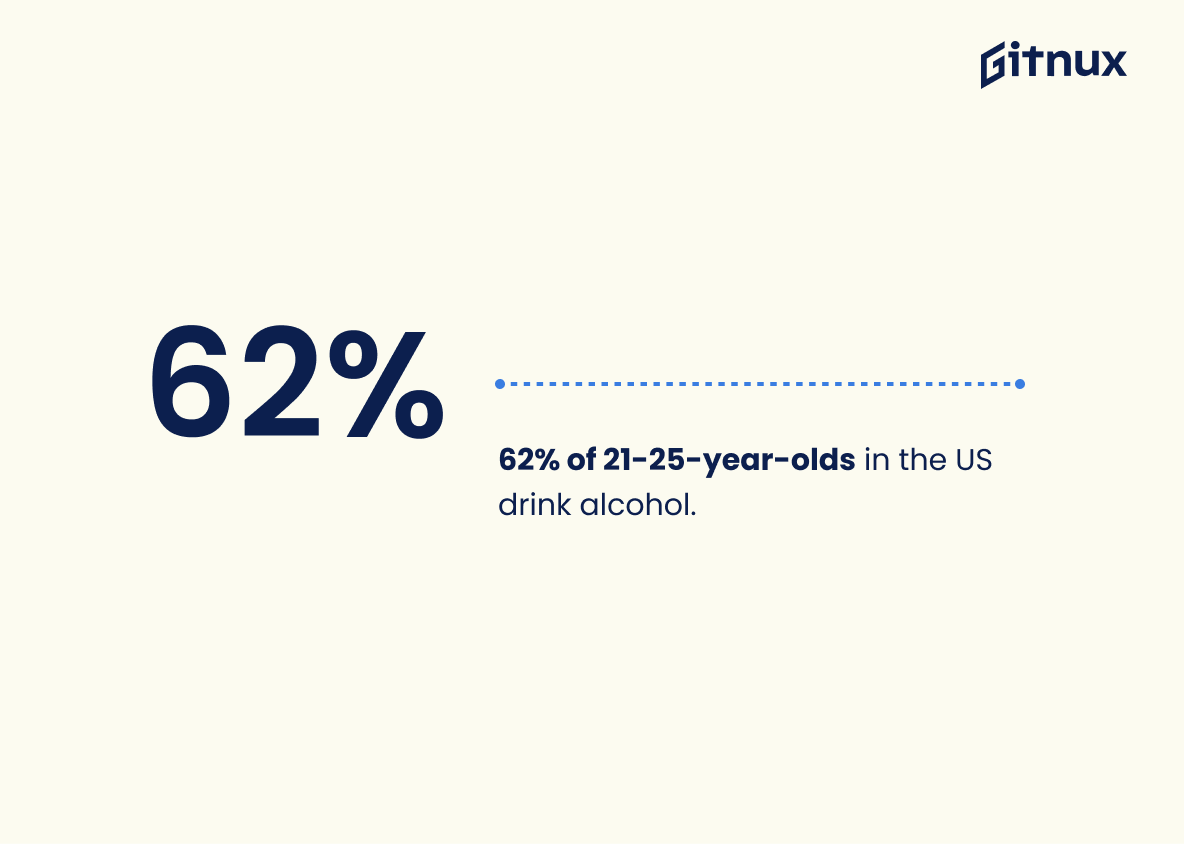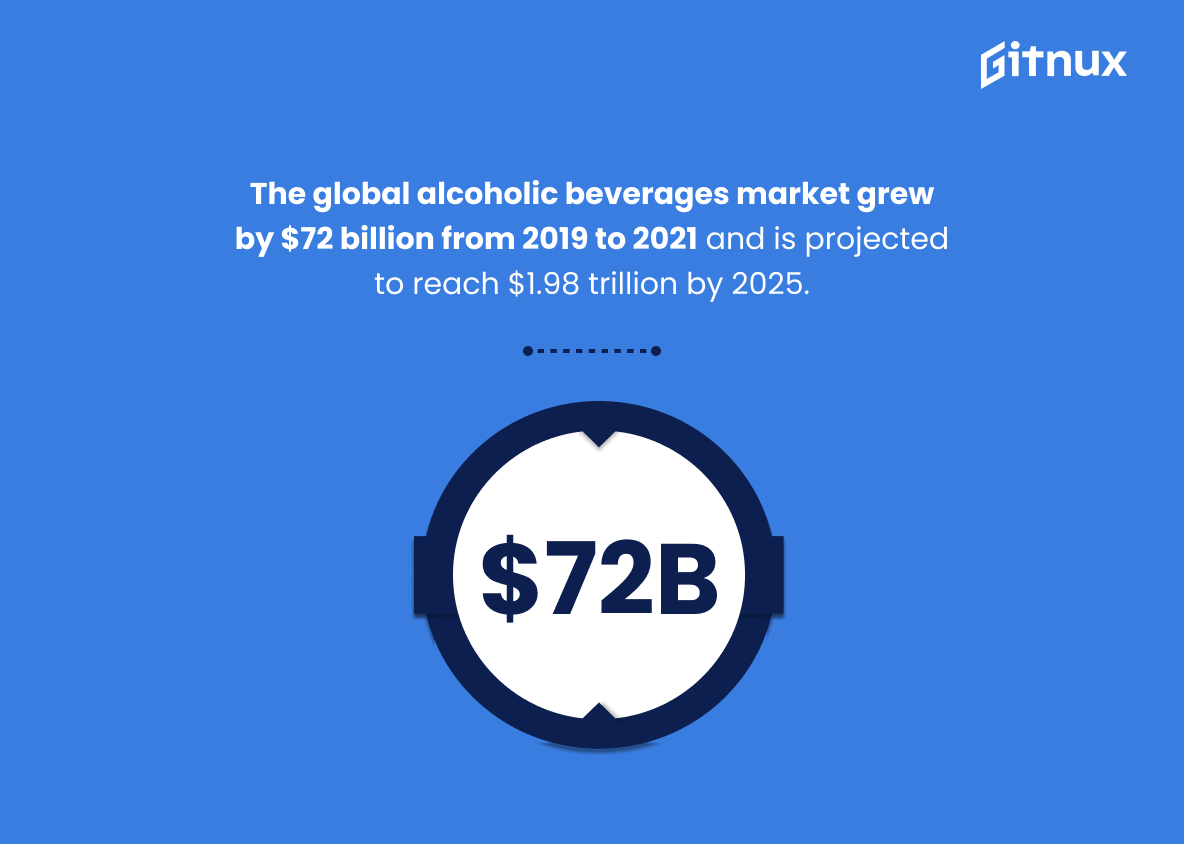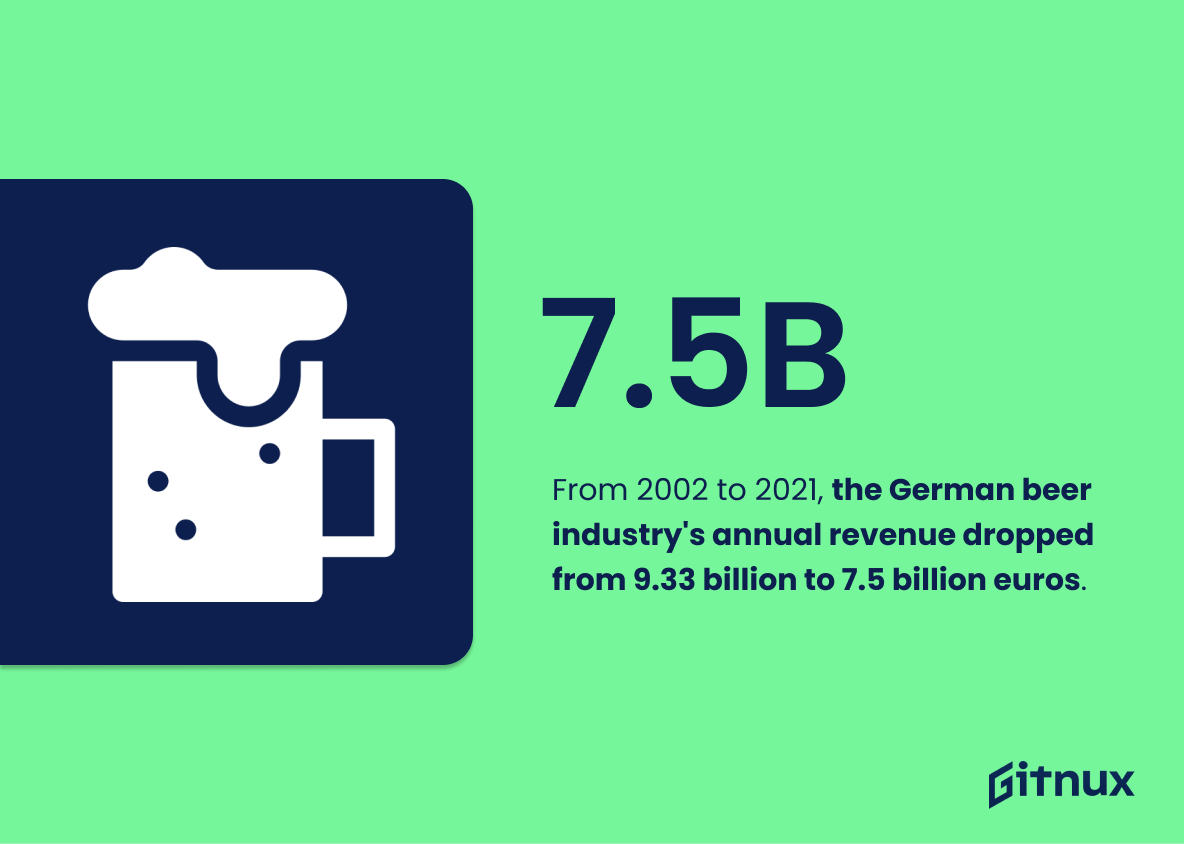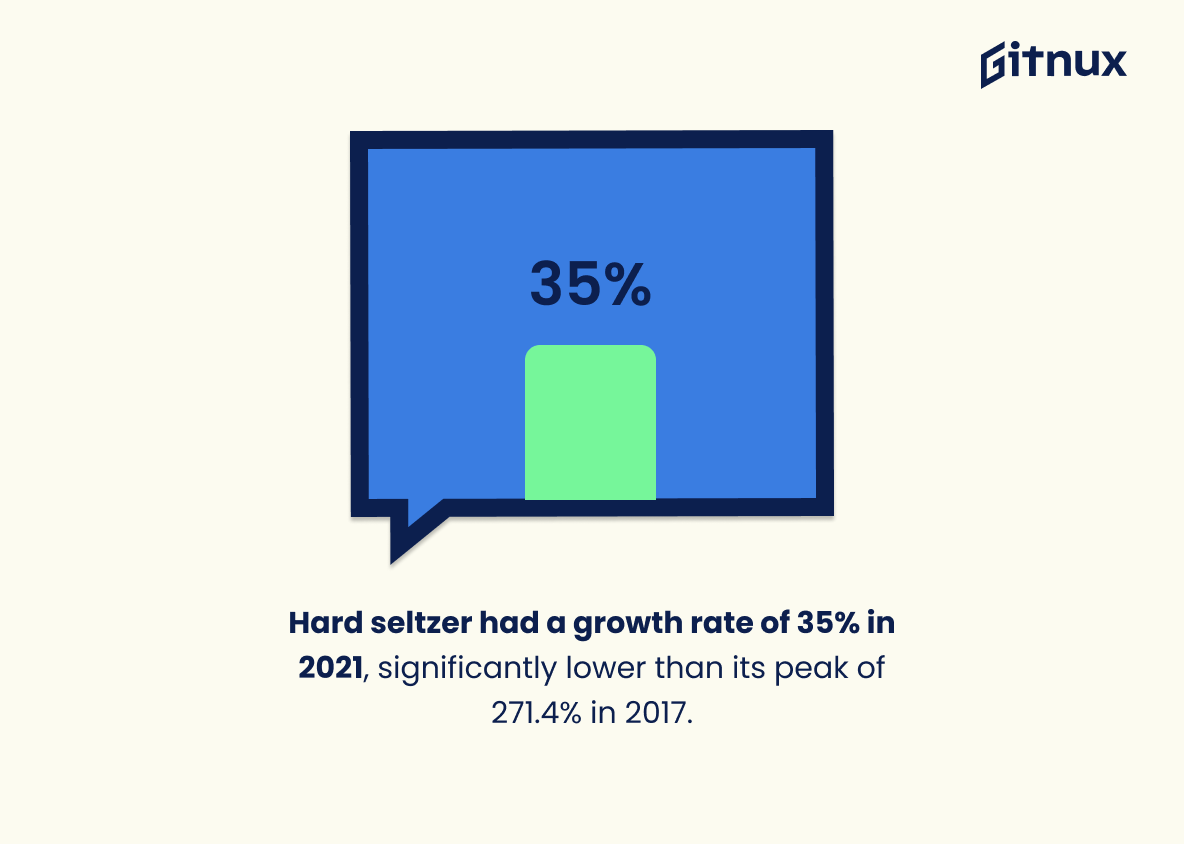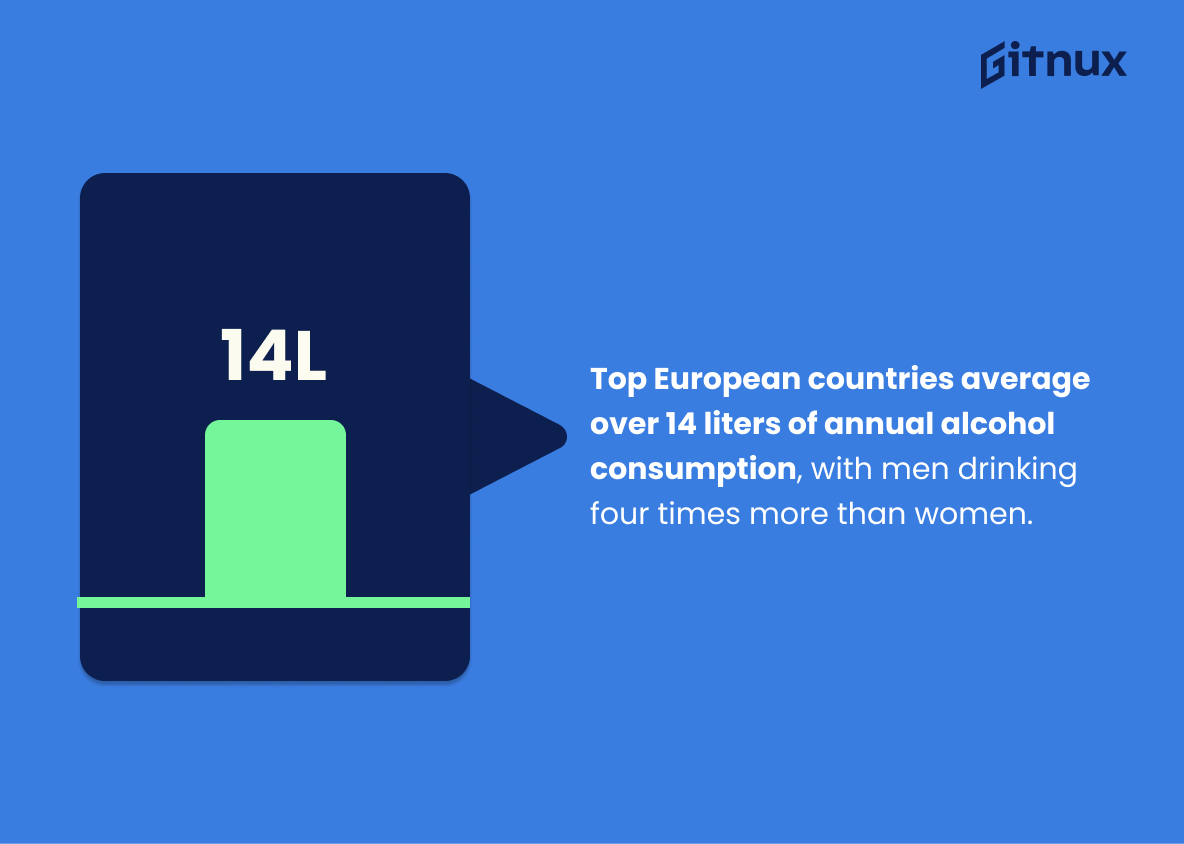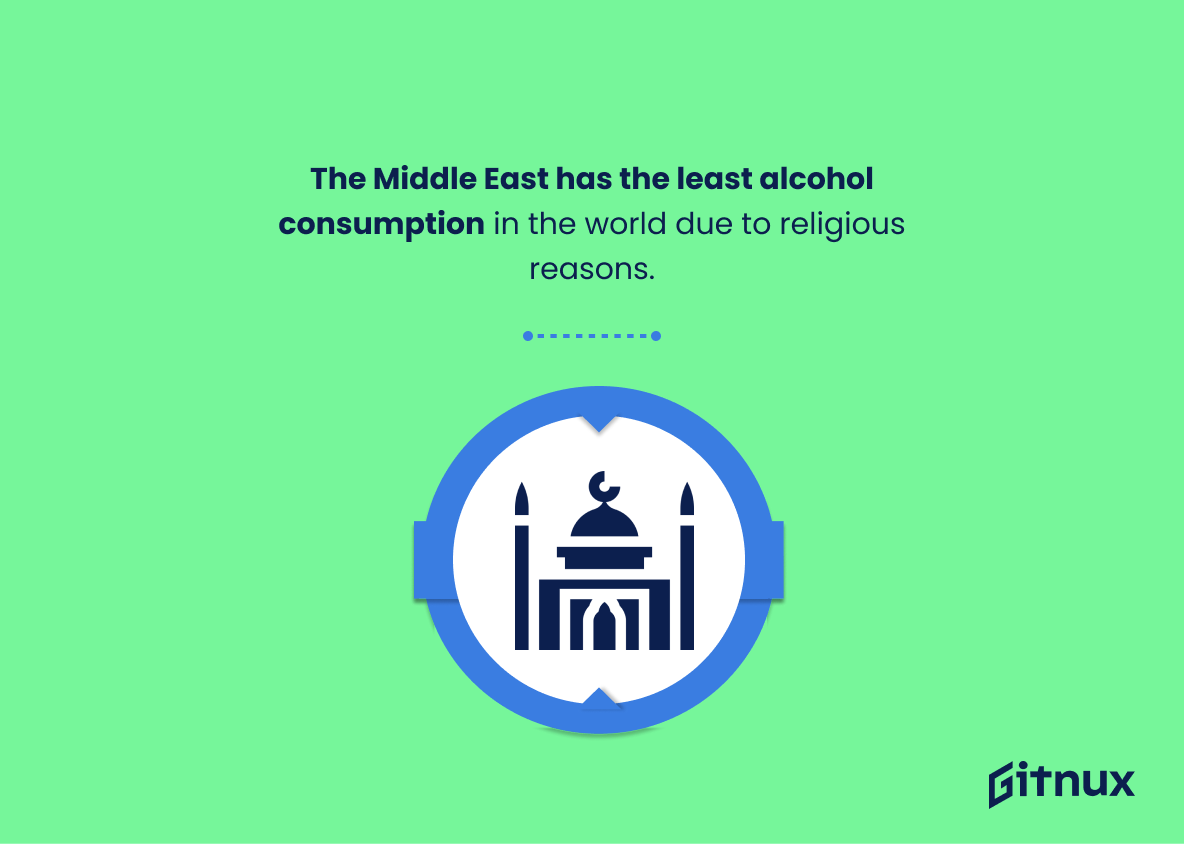Alcohol is one of the oldest and most popular beverages in the world. It has been a part of human culture for thousands of years and continues to be a major part of many cultures today. As such, it is no surprise that the alcohol industry is a major economic force.
In this blog post, we will take a look at some of the most interesting and important statistics about the alcohol industry. We will explore the size and scope of the industry, the types of alcohol consumed, and the impact of alcohol on society. By the end of this post, you will have a better understanding of the alcohol industry and the role it plays in our lives.
Alcohol Industry: The Most Important Statistics
Beer accounted for 42.5% of the U.S. alcohol industry market in 2021, down from previous years, while spirits have gained market share.
Most European countries in the top 10 have an average alcohol consumption of over 14 liters per year, with men drinking 4 times more than women.
Alcohol Industry: Statistics Overview
Distilled spirits sales increased 5%, American alcohol sales increased by over 5%, and total sales topped out at almost $30 billion in 2019, showing an increase of $1.5 billion and 7.6 million cases over the previous year.
This matters in the context of Alcohol Industry Statistics because it shows that the industry is growing and that Americans are spending a significant amount of their income on alcohol.
Premium alcohol grew at a CAGR of 8.2% between 2017 to 2021, and is projected to rise at a CAGR of 9.3% between 2022 to 2031.
This statistic is important to the Alcohol Industry as it demonstrates the increasing popularity of premium alcohol among younger drinkers, and the rising disposable income that is driving this growth. This information can be used to inform marketing and product strategies, as well as pricing decisions.
5% fewer people are drinking alcohol out from 2014 to 2019, with 1 in 5 16-24 year olds not drinking alcohol.
This matters in the context of Alcohol Industry Statistics because it shows that there is a trend towards no or low-alcohol drinks, which could have an effect on the industry in the future. This could mean that companies need to adjust their strategies in order to remain competitive and profitable.
E-commerce alcohol sales are predicted to grow by 34% between 2021-2026, with a 43% increase in 2020.
This statistic is important for the Alcohol Industry because it demonstrates the increasing popularity of online alcohol sales. This trend is likely to continue, and businesses in the Alcohol Industry should consider investing in e-commerce platforms to capitalize on this growth.
In 2016, the worldwide average consumption of alcohol was 6.4 litres of pure alcohol per person aged 15 years or older, with Estonia and Lithuania being the biggest consumers.
This statistic is important for the Alcohol Industry because it provides insight into the current market and can help inform decisions about production, marketing, and pricing. It also helps to identify potential areas of growth or decline in the industry.
In 2019, Czechia had the highest per capita alcohol consumption at 14.26 liters, followed by Latvia and Moldova.
This statistic is important for the Alcohol Industry because it provides insight into which countries are consuming the most alcohol. This information can help the industry better understand consumer preferences and target their marketing and advertising efforts accordingly.
Beer accounted for 42.5% of the U.S. alcohol industry market in 2021, down from previous years, while spirits have gained market share.
This statistic matters because it shows the changing trends in the alcohol industry. It indicates that while the wine market has remained stable, the beer market is shrinking in favor of spirits. This information is important for alcohol industry stakeholders to understand in order to make informed decisions about their businesses.
62% of 21-25 year olds in the US are current alcohol drinkers, with the highest rates of binge drinking in Wisconsin, North Dakota, and Montana, and the lowest in West Virginia.
This statistic is important in the context of Alcohol Industry Statistics as it provides insight into the drinking habits of the age group that is most likely to consume alcohol, and the states where this age group is most likely to binge drink. This information can be used to inform marketing strategies and product development for the alcohol industry.
The global alcoholic drinks market decreased by 10.3% in 2020, but is expected to grow by 7.2% by 2025.
This statistic is important because it shows the current state of the alcoholic drinks market and provides insight into the future of the industry. It is also useful for investors and businesses in the alcohol industry, as it provides an indication of the potential for growth and profitability in the coming years.
The global market size of alcoholic beverages increased by 72 billion dollars from 2019 to 2021 and is estimated to increase to 1.98 trillion U.S. dollars by 2025.
This statistic matters in the context of Alcohol Industry Statistics because it shows the growth of the industry over the past few years and the potential for further growth in the future. This growth could be beneficial to companies in the industry, as it could lead to increased sales and profits. Additionally, it could be beneficial to consumers, as it could lead to more variety and lower prices.
The German beer brewing industry has seen a decline in annual revenue from 2002 to 2021, from 9.33 billion euros to 7.5 billion euros.
This statistic matters in the context of Alcohol Industry Statistics because it provides insight into the overall health of the German beer brewing industry. It also provides a benchmark for other countries to compare their own brewing industry’s performance against.
Hard seltzer had a growth rate of 35% in 2021, significantly lower than its peak of 271.4% in 2017.
This matters because it shows that the hard seltzer market is slowing down, indicating that the Alcohol Industry is becoming more competitive and that other alcoholic beverages are gaining in popularity.
The import volume of alcohol-free beer in China increased by 6.52 percent in 2021, while the import volume of alcoholic beer decreased by 10.17 percent.
This statistic is important because it shows the changing trends in the alcohol industry. It suggests that there is an increasing demand for alcohol-free beer in China, while there is a decreasing demand for alcoholic beer. This could be due to changing consumer preferences, health concerns, or other factors. As such, this statistic can help alcohol producers and distributors to better understand the market and adjust their strategies accordingly.
Most European countries in the top 10 have an average alcohol consumption of over 14 liters per year, with men drinking 4 times more than women.
This statistic is important in the context of Alcohol Industry Statistics because it highlights the prevalence of alcohol consumption in Europe and the gender disparity in drinking habits. This information can be used to inform strategies to reduce alcohol consumption and to target marketing campaigns to different genders.
The Middle East has the least alcohol consumption in the world due to religious reasons.
This statistic matters in the context of Alcohol Industry Statistics because it highlights the importance of cultural and religious beliefs in determining the consumption of alcohol in certain countries. This can inform the strategies of alcohol companies when it comes to marketing and selling their products in different countries.
Beer, wine, and liquor taxes range widely across the US, from $0.02 to $14.27 per gallon.
This matters because taxes can have a significant impact on the cost of alcohol, which can influence consumer behavior and the overall health of the alcohol industry.
The global market for no-alcohol and low-alcohol beverages is expected to grow 31% by 2024.
This statistic is important because it shows that the demand for non-alcoholic and low-alcoholic beverages is increasing, which could have a significant impact on the alcohol industry. This could mean that more consumers are choosing to drink less alcohol, or that more non-alcoholic options are becoming available. Either way, this statistic is an important indicator of the changing landscape of the alcohol industry.
28% of young Millennials and 55% of Americans of legal drinking age prefer to drink at home.
This statistic is important for the Alcohol Industry because it shows that the majority of consumers are choosing to drink at home instead of at bars or restaurants. This could indicate a shift in consumer preferences and may require the industry to adjust their marketing strategies to better target consumers who prefer to drink at home.
Conclusion
In conclusion, the alcohol industry is a major economic force in the United States and around the world. With a wide range of products, it is no surprise that the industry has seen steady growth over the past few decades.
The industry is highly regulated and is subject to numerous taxes and fees, which can make it difficult for smaller businesses to compete. Despite this, the industry remains a major contributor to the economy and provides jobs for millions of people. As the industry continues to grow, it will be interesting to see how it continues to shape the economy and the lives of those who work in it.
References
1 – https://thebrandsmen.com/alcohol-branding-and-marketing-strategies/
2 – https://www.thespiritsbusiness.com/2022/07/premium-alcohol-to-be-worth-us1-7tn-by-2032/#:~:text=The%20market%20researcher%20valued%20the,rate%20of%208.7%25%20in%202022.
3 – https://www.bbc.co.uk/news/uk-scotland-scotland-business-50194900
4 – https://www.thespiritsbusiness.com/2022/11/alcohol-e-commerce-sales-to-rise-by-34/#:~:text=E%2Dcommerce%20alcohol%20sales%20in,to%20IWSR%20Drinks%20Market%20Analysis.&text=New%20data%20from%20IWSR%20revealed,34%25%20between%202021%2D2026.
5 – https://en.wikipedia.org/wiki/List_of_countries_by_alcohol_consumption_per_capita
6 – https://worldpopulationreview.com/country-rankings/alcohol-consumption-by-country
7 – https://www.statista.com/statistics/233699/market-share-revenue-of-the-us-alcohol-industry-by-beverage/
8 – https://www.statista.com/statistics/354265/current-binge-heavy-alcohol-use-among-persons-in-the-us-by-age/
9 – https://www.statista.com/forecasts/1244600/alcoholic-drinks-market-global-market-value-revenue-growth
10 – https://www.statista.com/forecasts/696641/market-value-alcoholic-beverages-worldwide
11 – `https://www.statista.com/statistics/511287/brewing-industry-revenue-germany/
12 – https://www.statista.com/forecasts/1139178/global-alcoholic-beverages-consumption-growth-by-type
13 – https://www.statista.com/statistics/893636/china-non-alcoholic-and-alcoholic-beer-annual-import-volume-growth/
14 – https://worldpopulationreview.com/country-rankings/alcohol-consumption-by-country
15 – https://ourworldindata.org/alcohol-consumption
16 – https://www.urban.org/policy-centers/cross-center-initiatives/state-and-local-finance-initiative/state-and-local-backgrounders/alcohol-taxes
17 – https://explodingtopics.com/blog/alcohol-industry-trends
18 – https://www.snipp.com/alcohol-industry-trends-alcohol-marketing-best-practices
